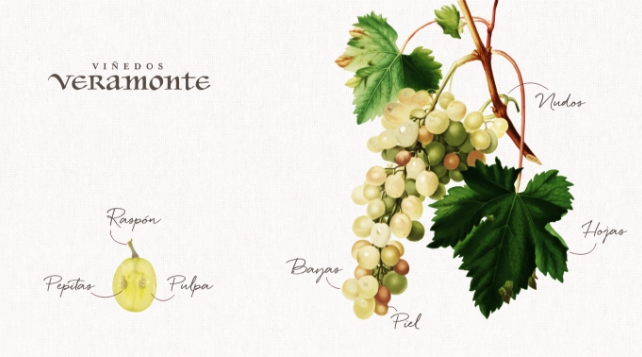Un buen Chardonnay chileno siempre tendrá notas frutales y un cuerpo medio. ¿Quieres saber mas? Acá te contamos.


Chardonnay and Sauvignon Blanc have particular qualities that define them. Read on if you’d like to learn more about the characteristics that distinguish these varieties.
Despite the many things they have in common, these two varieties also have marked differences you can recognize.

First, we have to acknowledge that there are style differences within a single variety. It all depends on the kind of plant (with characteristics associated with the DNA of the grape), where it grows, the climate, etc.

Sauvignon Blanc is best in cool climates, where its acidity can shine, as that is one of its greatest attributes. The wines are fresh and aromatic, and if you try a grape of this variety, you’ll note aromas of tropical fruit like passionfruit and peach, versus Chardonnay, which is a more neutral variety.
In terms of the form of the grapes, Sauvignon Blanc’s bunches and grapes are smaller, while Chardonnay tends to form larger and more compact bunches with grapes that tend to be larger. As Chardonnay is a more neutral variety, it needs more work in the cellar, with distinct winemaking techniques.

When we talk about processes, traditionally Sauvignon Blanc already has a large portion of the work done with the harvest and fermentation (although there are Sauvignon Blancs that are more complex, thanks to additional winemaking techniques).
 Chardonnay, on the other hand, needs more elaboration; for example, aging in oak barrels or concrete eggs, malolactic fermentation, etc., in order to deliver the complexity expected of this variety.
Chardonnay, on the other hand, needs more elaboration; for example, aging in oak barrels or concrete eggs, malolactic fermentation, etc., in order to deliver the complexity expected of this variety.
Malolactic fermentation is a second fermentation that takes place after alcoholic fermentation, and produced by the yeasts.
As the Spanish site Aprender de Vino explains, this is the process where the bacteria metabolize the malic acid, converting it to lactic acid, which translates into a smoother acidity and creamier texture in the wine.
The vast majority of Sauvignon Blancs have fruit aromas reminiscent of citrus fruit, like lime. And if the style is more tropical or the wine is riper, you can also find aromas like peach, vegetable notes like tomato lead, passionfruit, and pineapple. The wine is lighter in body.


In Chardonnay the aromas are cantaloupe or butter, especially if the wine has aged in barrels or undergone malolactic fermentation.

In the case of Veramonte Chardonnay, this tends to be fresher as it does not undergo malolactic fermentation. Here the fermentation is spontaneous, and we don’t force the processes.
In order to obtain the creamy texture that Chardonnay is known for, we use other techniques like stirring of the fine lees. If the wine is of good quality, the lees are stirred periodically in a barrel or tank, adding creaminess and texture to the body.
The differences between white wines start with the grape variety. Then comes the geographical origin of the wine. And finally, it’s winemaking processes and the style the winemaker wants to imprint on the wine.
{{cta(’87e62002-336d-4d8d-b07e-daeec80c79ef’)}}
Un buen Chardonnay chileno siempre tendrá notas frutales y un cuerpo medio. ¿Quieres saber mas? Acá te contamos.
Si quieres saber un poco de la historia del Sauvignog Blanc, de dónde viene originalmente y cuáles son sus principales características, revisa este blog.
Recomendaciones para todos quienes se sienten identificados con nuestro Sauvignon Blanc.